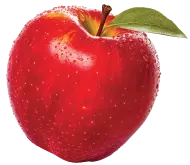During the past few years, I’ve been working to revalidate Tree Top’s manufacturing processes for microbial reduction. Throughout this journey, I reflected on the origin, history, and science behind food spoilage. My contemplation led me to the idea of creating a series of blogs, exploring this topic and sharing with you – our Tree Top voyage.
This series of articles will focus on pathogenic and spoilage bacteria, known control methods, how the food industry tests, defines, and implements process treatments to affect the destruction of these organisms, and some great ideas for controlling processes to ensure repeatable results. Along the way, we’ll touch on the history of microbiology, pathogens vs. spoilage organisms, validation principles, and how we go about working through validation activities and verification of process monitoring to ensure the foods we make are reasonably safe for consumers. Without further ado, let’s jump in.
Part I – The Way Back Machine and Scientific Reasoning
Back at the start of recorded history (4th to 3rd century BCE), people began asking philosophical questions about where everything came from. Curiosity was rampant and hypotheses about the universe and how we all got here sprang up everywhere. One such widely supported hypothesis regarding the potential origin of life was called, “The Theory of Spontaneous Generation.” According to this theory, life was able to spontaneously generate from non-living materials. Some of the more far-reaching examples of this theory are:
- A pile of wheat left alone in a corner would eventually turn into mice.
- Two bricks left in sunlight with a piece of basil between them would generate scorpions.
- Meat, through the process of decomposition alone, would spontaneously create fly larvae.

Thanks to the work of Louis Pasteur and John Tyndall between 1859 and 1870, we have definitive proof this theory is indeed false. Subsequent advances in optics, mechanics, physics, and further experimentation helped us understand the biology taking place at the microscopic level, and the resulting impact on our health and that of our communities. Microbial contamination of foods is not something that occurs because of spontaneous generation of organisms from non-living material, but rather a decidedly predictable progression of events that requires some part of a living organism to get the party started, be it spore, cell, seed, or egg. Consequently, these advances led to, among others, the science of food safety.

Food safety troublemakers
Microorganisms identified as having the potential to cause issues with human biology are generally grouped into several classifications. For this series, I will only focus on bacteria, both pathogens and spoilage organisms. There are, of course, myriad other classifications that will not be covered, spanning parasitic worms to viruses and prions. For further knowledge and study on these, I suggest Modern Food Microbiology by James Jay (Aspen Publishing, 2000).
There are generally two ways in which pathogenic bacteria can produce a negative effect in the human body. The first is invasion of host tissues, taking over a portion of the body and either triggering an immune response to the invaders or by disallowing those tissues to function normally. The second mode of injury is through toxin production. In this scenario, an organism either has already created a powerful toxin in the food ingested or the organism creates a toxin after it gains entry to the human host and finds a favorable environment to colonize. The provided table shows a representation of just a few of the organisms that are commonly identified as target microbial pathogens in the food industry.

Just as the microbial world houses a colorful rainbow of diversity, humans also show a wide range of responses to microbes. A lot of people may not show any signs of illness following exposure to some of the known pathogens. Nonetheless, we do know that very young children, the elderly, pregnant women, and those with reduced immune function tend to have less resistance to foodborne pathogens. Symptoms can range from mild illness to death if left untreated. Knowing how serious this impact could be and given the speed and scale at which we make food products today, it’s extremely important for manufacturers to monitor our foods cautiously and continuously as they travel from farm to fork. From raw ingredient sourcing and supplier audits all the way through production methods and even into finished good storage and handling practices, food safety is everyone’s job in the food industry.
What’s ahead?
Here’s a sneak peek at the next legs of our food safety journey:
Part II
- What is a log-kill? How much is enough?
- Pasteurization vs. Sterilization
- Safe harbors and previous studies
- Hurdles and Helpers: Spoilage organism impact, storage, water activity, pH, salt, MAP
Part III
- Validation questions and setup
- Surrogates
- Running tests
- Interpreting data
- Continuous control and monitoring
Part IV
- Tree Top’s journey validating food safety processes
Please contact us, if you want to know more about our food safety policies and processes at Tree Top.
Author’s note
With the holidays just around the corner, let me wish you a happy and memorable holiday season. For those of you I haven’t met virtually, or in person – a little about myself – I’m a senior food scientist at Tree Top, where I joined the R&D team in 2017. I have spent most of my career specializing in food manufacturing processes and packaging systems and hold a bachelor’s degree in chemical engineering from Oregon State University. And, naturally, I love all things food.
Continue Reading Tree Top’s Food Safety Journey – Part II




